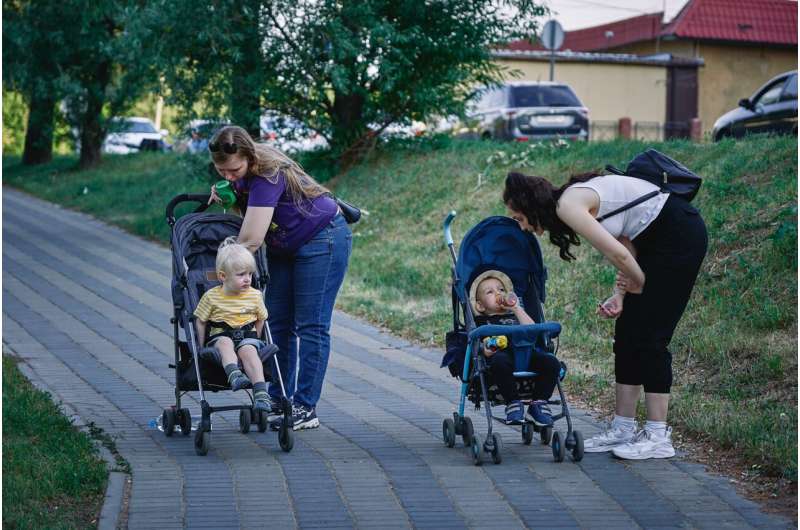This article has been reviewed according to Science X's editorial process and policies. Editors have highlighted the following attributes while ensuring the content's credibility:
fact-checked
peer-reviewed publication
trusted source
proofread
Researchers find walkable communities are healthier for both mom and baby

Pregnant women that live in walkable communities—with more sidewalks, parks and walking paths—not only engage in more physical activity but are also more likely to experience favorable birth outcomes, according to research from the University of New Hampshire.
The study, published in the journal of Economics and Human Biology, found that expectant mothers living in walkable counties tend to engage in more walking and exercise and have fewer issues with premature births, low birth weight, gestational diabetes and hypertension. Walking is often recommended as a safer, more moderate activity for pregnant women, so the authors reasoned that living in a more walkable area could have health benefits for them.
"Gestational diabetes is a growing issue and low birth weight and preterm babies are always a concern, they can just have so many more complications," said Karen Conway, professor of economics at UNH's Peter T. Paul College of Business and Economics. "At the end of the day, the data shows walkable communities mean mom and the baby are both in better health."
Conway and her co-author Andrea Menclova, associate professor of economics at the University of Canterbury, combined walkability measures created by the Environmental Protection Agency (EPA) with detailed data on physical activity from the Behavioral Risk Factor Surveillance System (BRFSS) and pregnancy outcomes from the National Vital Statistics Natality Detail Files (NDF).
They found that a 10-point increase in the walkability index—equivalent to transitioning from the "least walkable" to the "most walkable" category—is associated with a more than 70-minute increase in weekly exercise among pregnant women. This same change results in an 0.8 percentage point increase in the likelihood of a full-term birth, a 0.07-week extension in gestational age, a 27g increase in birth weight, and a 27% reduction in the likelihood of gestational diabetes and 16% reduction in hypertension. The study did not find a clear connection between walking and its impact on a mother's weight gain or high birth weight for the baby, known as macrosomia.
"We know that walkability may have other health benefits beyond encouraging more exercise," said Conway. "Living in an area more suitable for walking gets people outside and interacting with neighbors and relating to others in the community and all of those types of social and intrinsic activities can contribute to better overall health."
The professors applied the conceptual and empirical tools of economics to see if there was a causal relationship between walkability and pregnancy outcomes. They note that their study is part of a larger area of health economics that uses established data to analyze factors and policies that affect health outcomes, including those during and after pregnancy. The goal is to provide evidence that can help shape policies and inform city and town managers about cost-effective interventions that may help improve health outcomes of residents.
More information: Karen S. Conway et al, You'll never walk alone—The effects of walkability on pregnancy behaviors and outcomes, Economics & Human Biology (2023). DOI: 10.1016/j.ehb.2023.101269




















